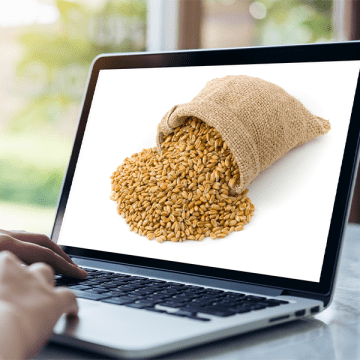The formulation of aquaculture feed constitutes a major challenge to aquaculture profitability. The purpose of the formulation process is to supply the nutritional needs of an animal species while taking into account the technical and economic contexts specific to aquaculture.
How can the constraints relating to the animal, the raw materials and the environment be conciliated?
Whatever the species, feed formulation is always based on the same principle: from the raw materials available on the market, a nutritionist must find a way to manufacture a feed that can satisfy the animal’s nutritional needs at the lowest possible cost.
Various factors must be taken into account for reaching a technical and economic optimum, as follows:
-
Economic factors: price and availability of raw materials
-
Nutritional factors: these include the quality of raw materials as well as the levels required of for each species (energy, protein, fat, trace elements, vitamins...)
- Technical factors: these encompass the possibilities allowed by the manufacturing methods (pelletisation, extrusion) and the way the feed is distributed (hand distribution, automation)
The raw materials available, at the stem of the matrix of formulation
The first element to consider is the availability, cost and composition of the raw materials available on the market. Once nutritional information related to each raw material is compiled, this information can be organized into a formulation matrix or table, allowing for the profiling of each raw material in order to best estimate the analytical constituents. The matrix is in constant evolution due to the need to update the variables based on the laboratory analysis obtained for each batch of raw materials or upon the changes in modes of harvest or of raw material origin, or of the provider.
The formulation constraints, synthesis of fish and shrimp needs at a specific stage of their lives
The second stage of the formulation process involves fixing formulation constraints that set the required amounts in nutrients for each species at a particular stage of its growth in order to achieve the growth targets aimed. These are based on the relevant scientific literature, accumulated empirical knowledge and testings of formulas on livestock. Requirements fix the minimum and maximum levels of each nutrient that must be contained in each feed.
It is also necessary to determine the minimum and maximum levels of each raw material available. Indeed, beyond their analytical composition, raw materials have properties that allow them to be used at more or less high concentration in feed for fish and shrimp. These amounts can, for example, have an impact on the binding properties of pellets or on feed palatability. Some raw materials may also contain anti-nutritional factors that are likely to limit their level of incorporation in the feed.
Premix solutions provide precise doses of micronutrients
By micronutrients, we refer more specifically to the vitamins and minerals that are not supplied in sufficient amounts in the raw materials in order to satisfy the needs of animals. These micronutrients are to be provided at specific doses so as to avoid a nutritional deficiency or intoxication.These micronutrients are delivered in the form of premix solutions (or premix) that must be blended directly into the feed composition along with the raw materials. Micronutrient requirements are unique to each species and each stage of development.
With the reduction of fish by-product content in feed, micronutrient needs have arisen. Taurine and hydroxyproline have been the subject of thorough research resulting in their raw integration in some premix solutions. It is also through premix solutions that additives or limiting amino acids are often included in the feed.
Formulation softwares allow optimization at lower cost
Only when these steps have been validated can the actual formulation process start. Feed formulation relies increasingly on dedicated softwares, often referred to as optimization softwares. Most of these are based on the same algorithm (called simplex). Depending on the context of the price and the composition of raw materials, these softwares allow for the formulation of the most economic feed based on the requirements set.
Techna has been accompanying aquaculture feed manufacturers in their process of raw material characterization, nutritional specifications and feed composition optimization for over fifty years. Moreover, its industrial units produce quality premix solutions designed for the various aqua farming species reared worldwide. For more information, please contact us!
Feedia embodies Techna's range of advice and solutions in breeding techniques and precision nutrition, serving the performance of production organisations, feed manufacturers and their breeder customers.



